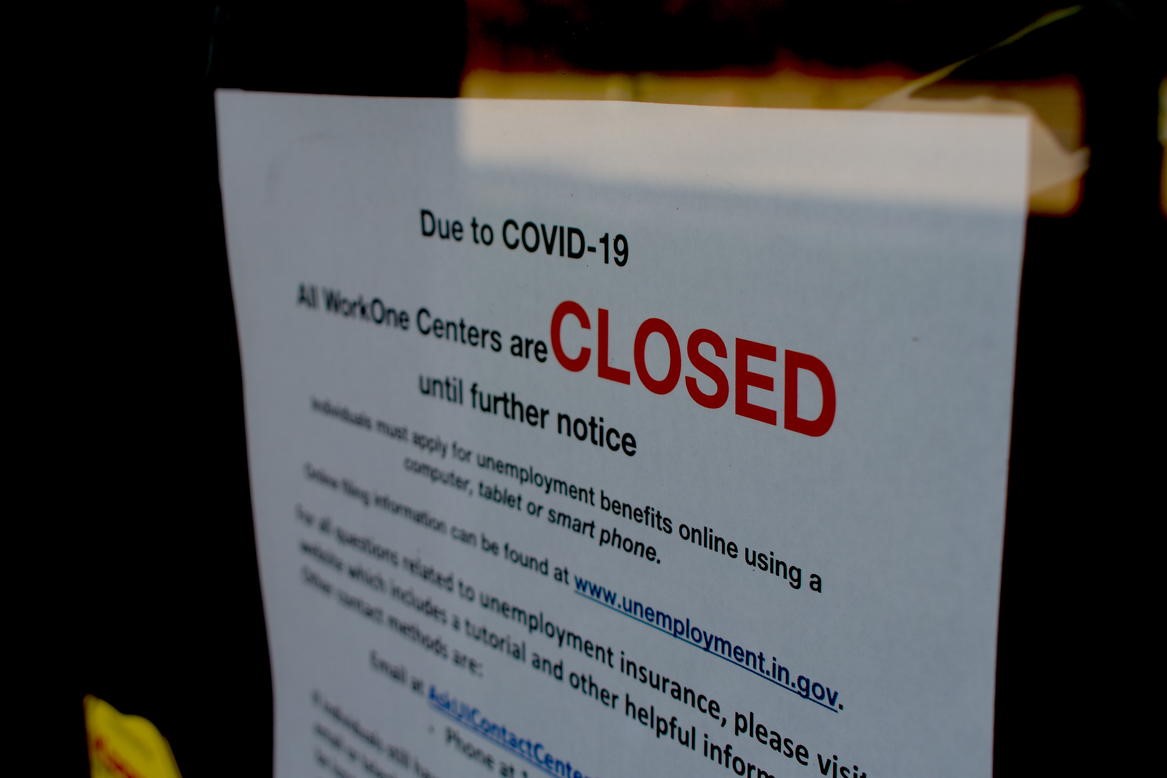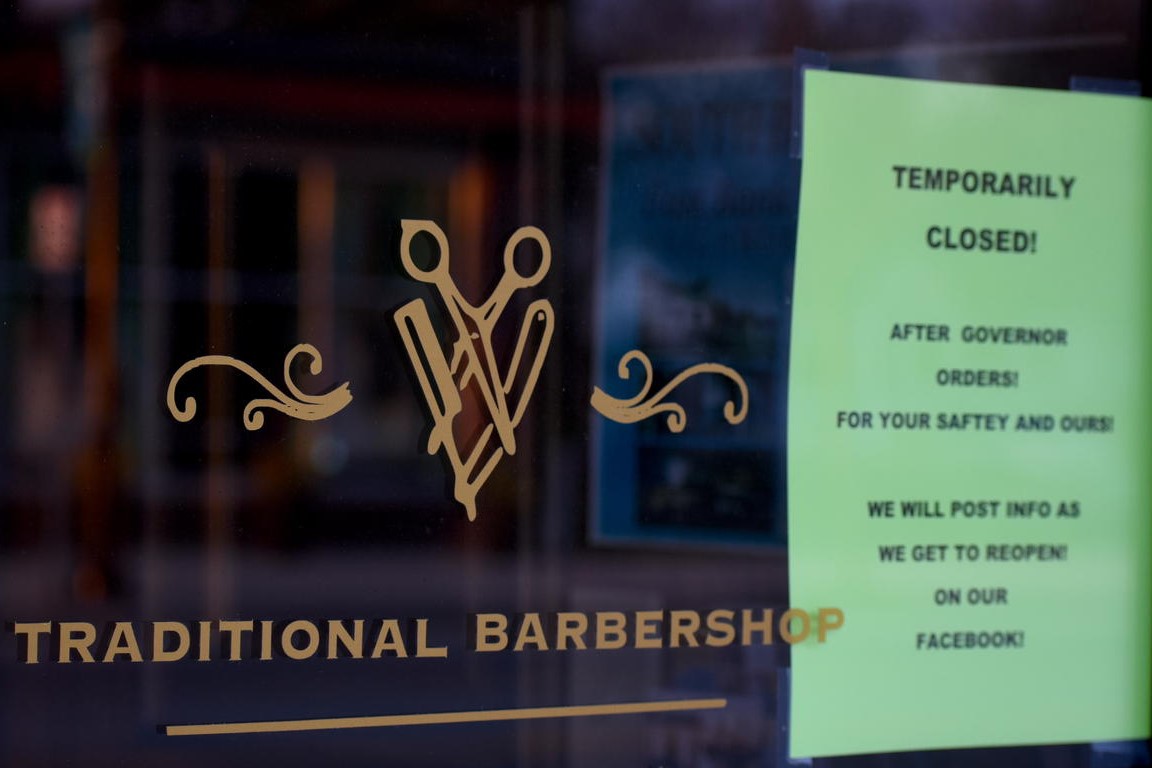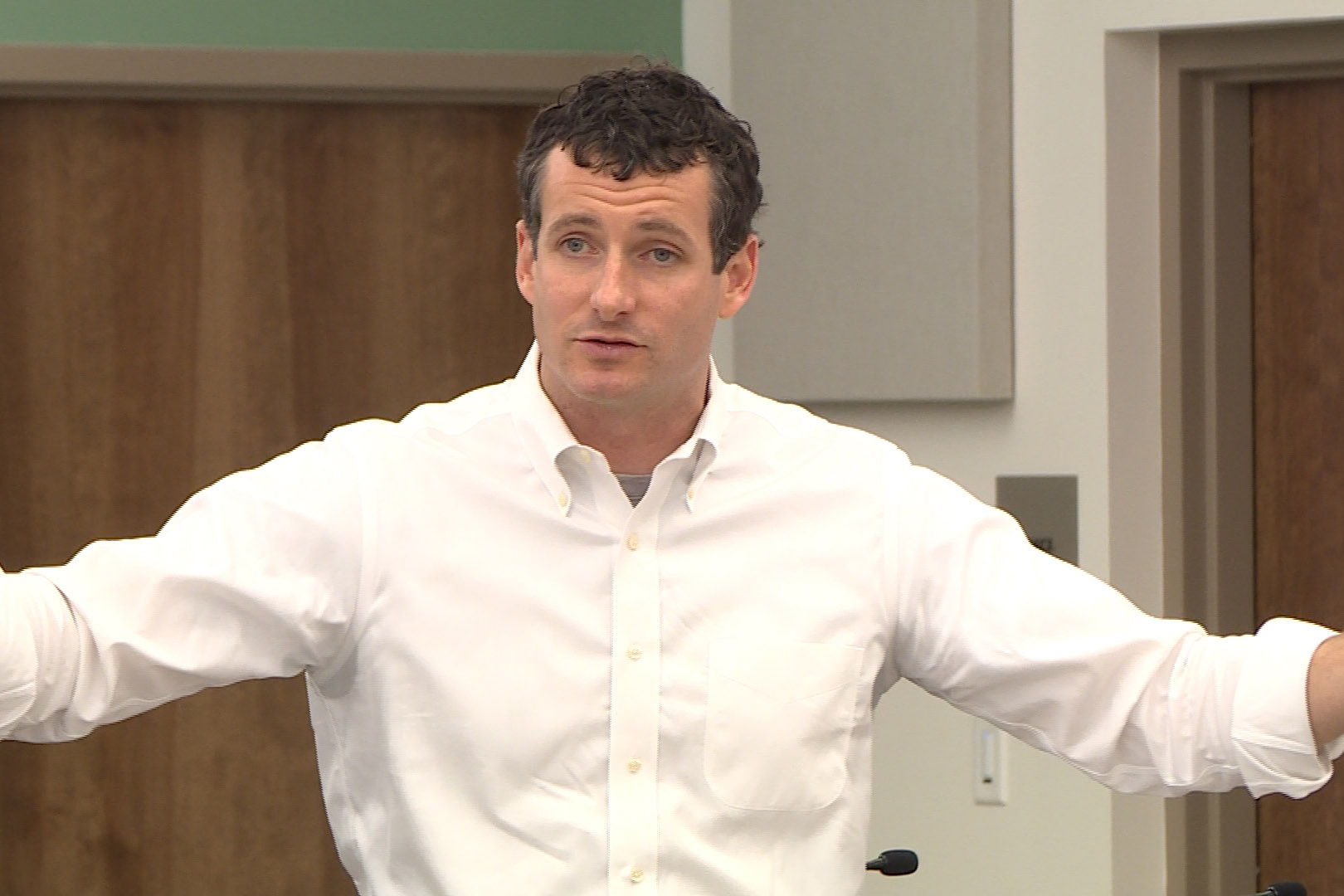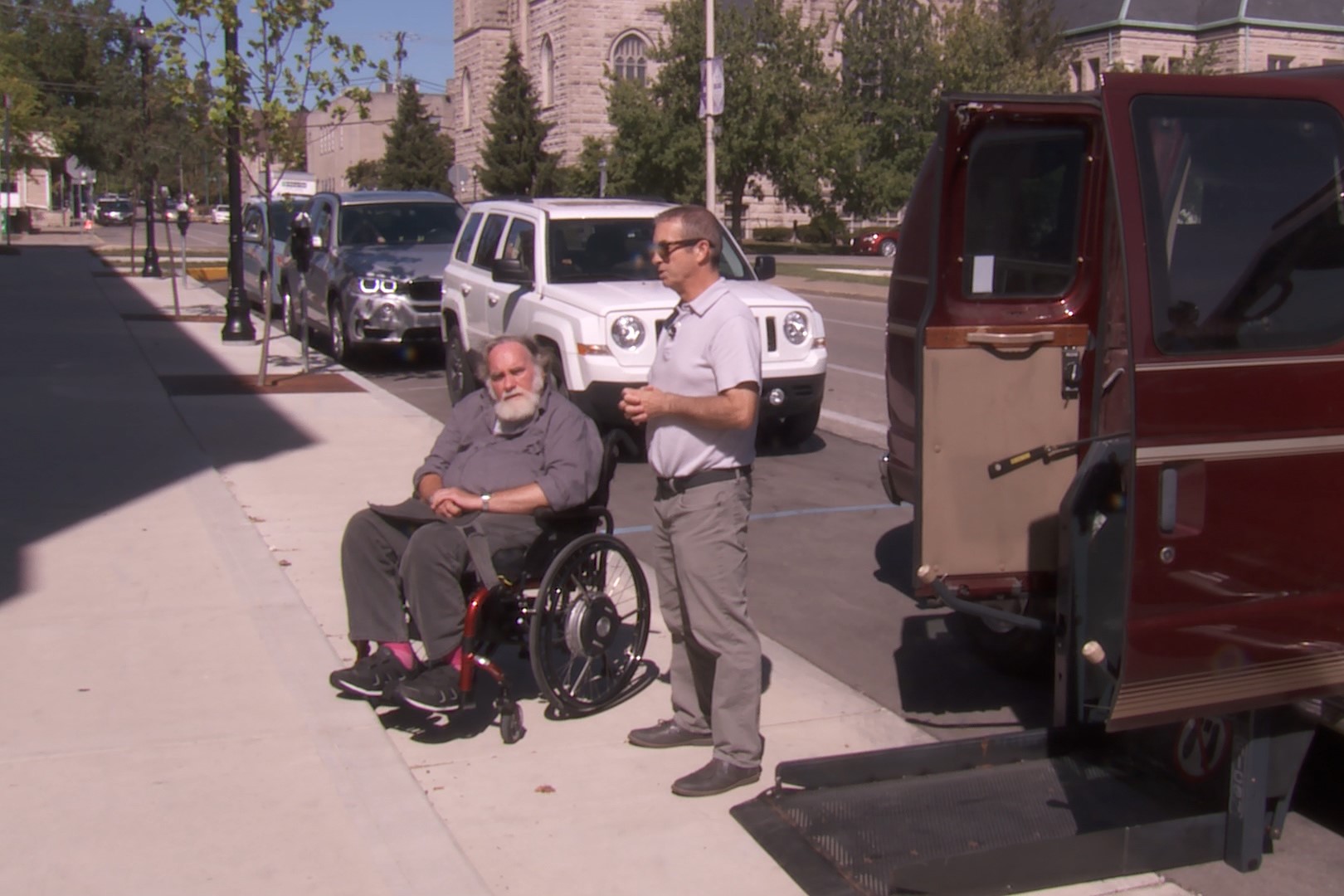
Shermis and Carter stand near an ideal wheelchair accessible parking spot downtown. (Seth Tackett, WFIU/WTIU News)
A Bloomington resident contacted City Limits recently with concerns that as Bloomington grows and changes, people with disabilities are being left behind or forgotten by their community.
In light of this concern, City Limits looked into what efforts the city makes, and if people living with disabilities perceive these efforts as sufficient.
Barbara Salisbury is the president of the American Council of the Blind of Indiana. She’s also on the Bloomington Council for Community Accessibility.
She says some of the biggest challenges for people who are vision impaired pertain to transportation and employment.
“They’re kind of related, because sometimes people can get a job, and then they can’t get transportation to get to the job,” she says.
BT Access is Bloomington’s transportation system for people who, by means of a disability, cannot use the existing Bloomington Transit “fixed route” bus system. Salisbury says, because the system doesn’t extend outside city limits, it restricts employment opportunities for people with disabilities.
“There are employers outside city limits, major employers,” she says. “And there are very little transportation options.”
Affordable housing also affects people living with disabilities and their access to transportation, jobs, and the community.
“The most affordable housing is outside the city limits, and that’s not an option for people with disabilities that don’t drive,” Salisbury says.
Salisbury has been in and out of the Bloomington community, and was in town when the Americans With Disabilities Act was passed in 1990. There are a lot of challenges people living with disabilities still face, but she says the city does listen and make improvements.
David Carter is on the Bloomington Council for Community Accessibility with Salisbury. He has used a wheelchair for the last 44 years and agrees that accessibility has been improved.
He says his biggest struggles often involve being able to have full access to businesses.
“There are very simple priorities, parking, getting in, doing business in the place where you do business,” Carter says. “The main thing is making the business so you can get in, and do business there.”
He says he still has to deal with issues of accessible sidewalks, properly built curb cuts, and handicapped parking, though the city is responsive to improving those things when it is able.
Michael Shermis is the special projects coordinator for the city’s Community and Family Resources Department and is the staff liaison for the Council for Community Accessibility.
He says one way the city works to make the community more accessible to persons with disabilities is by doing accessibility surveys for businesses and organizations in town.
From there, the council will make recommendations on how the business or organization can make itself more accessible. The businesses and organizations that make recommended changes receive a sticker from the city, indicating it is accessible to persons with disabilities.
Shermis says many local festivals, such as Bloomington Pride and Lotus, ask the council to make recommendations for them.
He adds there are annual events to raise awareness about people living with disabilities. In the summer, the city celebrates the passage of the ADA with various awareness activities.
“For example, the Monroe County Library, they do a wheelchair obstacle course and let people try to get over mumps and humps to get around," he says.
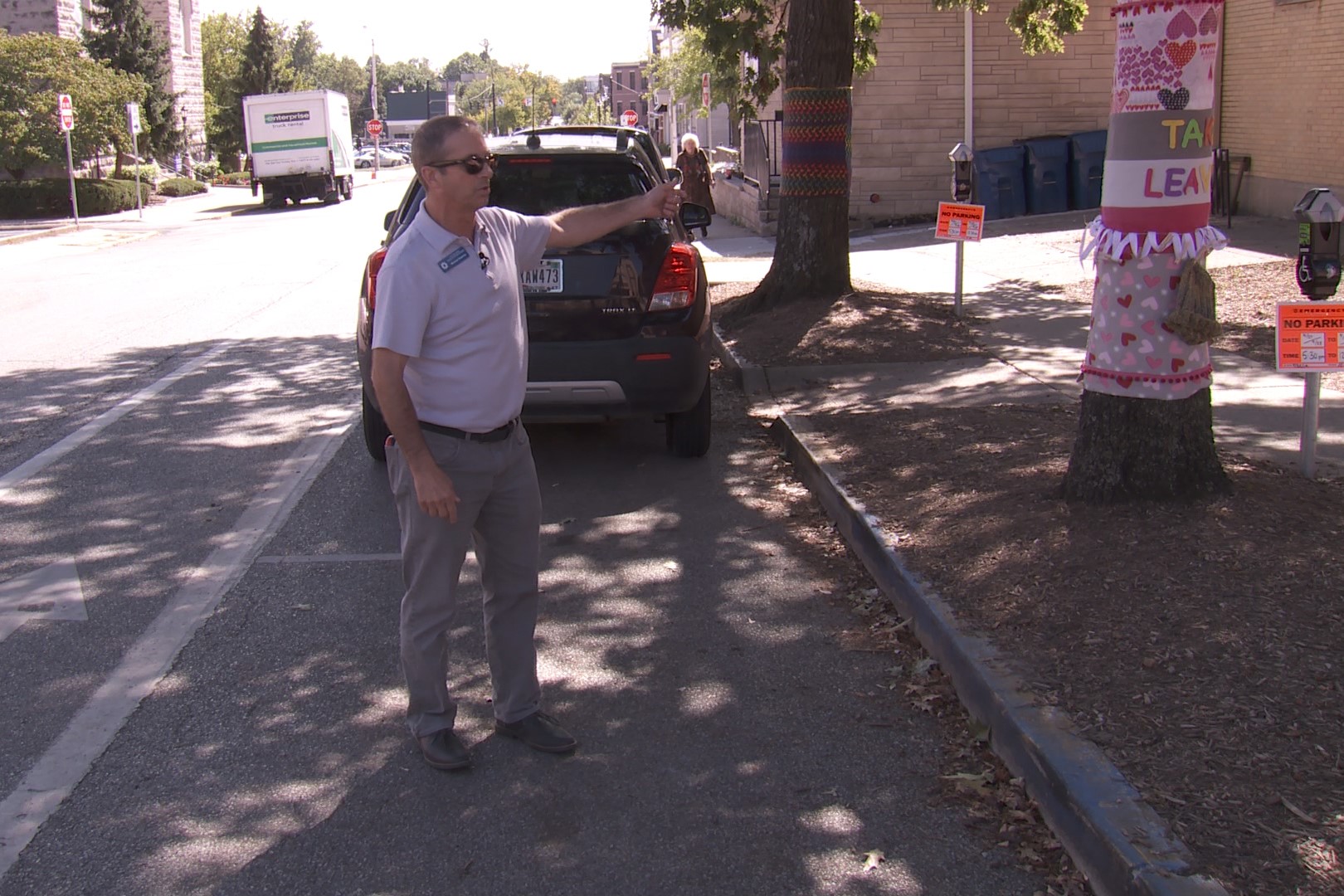
Shermis says the city tries to respond promptly when people submit improvements that need to be made in the community.
“A woman in a manual wheelchair said, ‘You can’t get around in a lot of areas of downtown,’ and we quickly responded with a, ‘Can we walk around with you?’ -- wheel around for her, and actually go to a few of these places so that we can understand what your challenges are," Shermis says. "Because you make a blanket statement about everything not being accessible, well we need a little more specificity to figure out what we can fix."
Shermis says after walking around with the woman and taking notes and photos of the areas she had trouble with, nine recommended improvements were submitted to the city.
He says two of the simpler issues she pointed out got fixed within about two days.
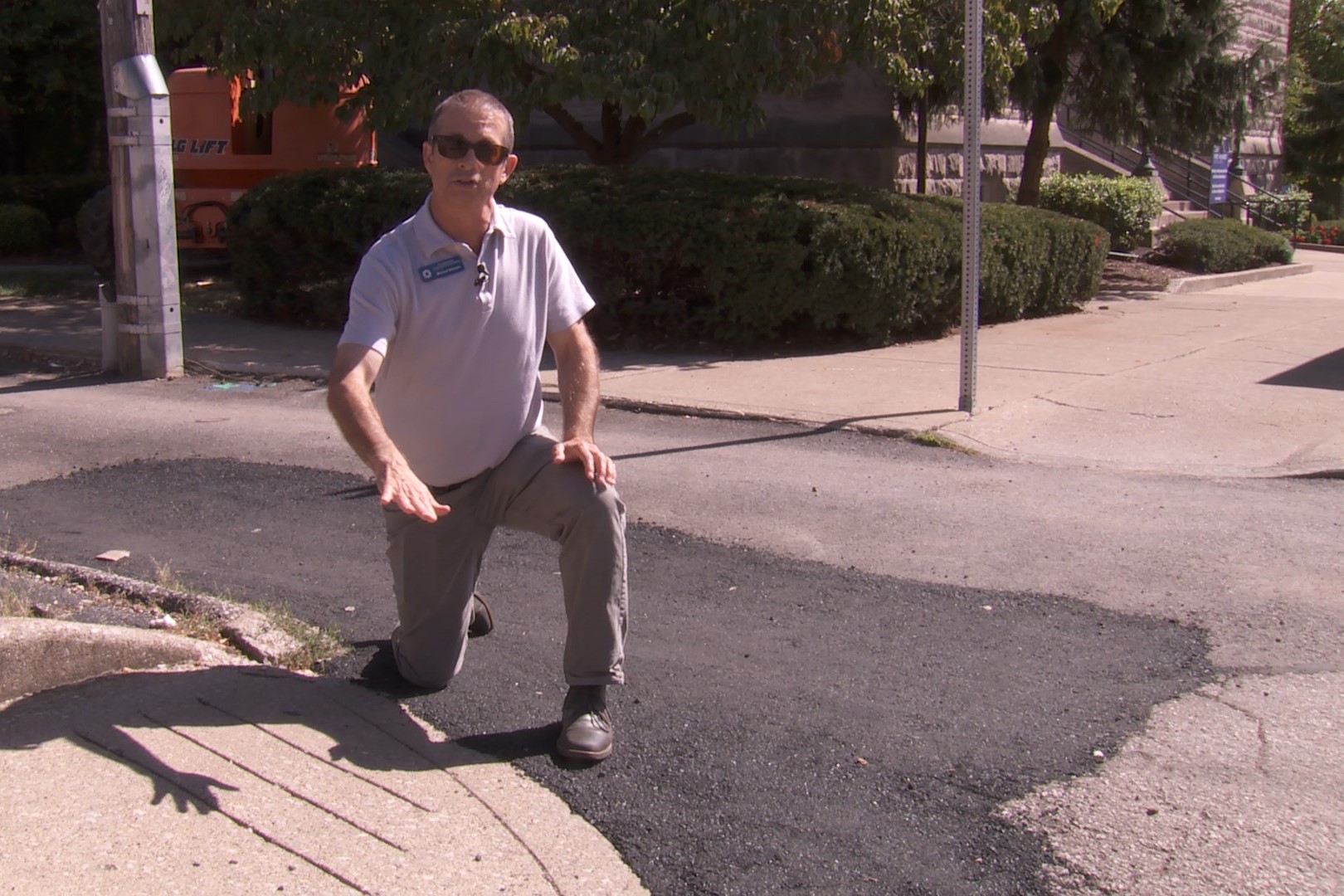
He says the other seven issues are queued to be addressed, but are larger issues that may take more time.
“I know the city is trying to do the best it can in terms of putting in more curb cuts, the newer kinds of curb cuts that help people get around, and we make every effort to address any complaint that’s made,” he says.
Salisbury agrees with Shermis that the city does work to address people’s issues, but there are many improvements still to be made, especially for transposition.
As the city makes updates around town, she says it is essential that people living with disabilities be included at every step.
“We need to be on the forefront," Salisbury says. "We need to be at the front, making sure that things, as they change, that we’re not left out."
She says the community is more aware today than it was 30 years ago that people living with disabilities have varying needs to be addressed.
Salisbury says that making improvements around town will take time and educating the community at large about the needs of people living with disabilities is ongoing.
Have a question? Ask City Limits:
Our community is changing, from closing businesses to traffic and road construction to affordable housing, and we see the impact of these changes all around us.
We want to know: What questions do you have about how the Bloomington of tomorrow will impact your work, your personal life, your community and your future?
Here’s how it works: You submit a question you’d like us to explore about how Bloomington has changed over the past few decades, what you want to see for the city in the future and how ties with IU continue to shape the community.
So: What do you wonder about how Bloomington is changing and how it impacts your life?
Interested in an ongoing conversation how Bloomington is changing? Join our Facebook group!







